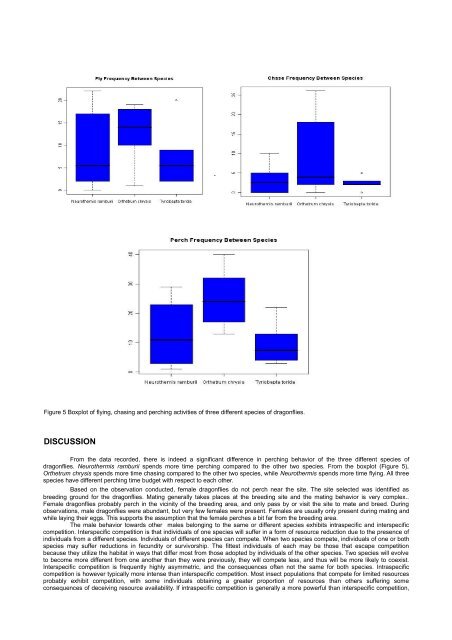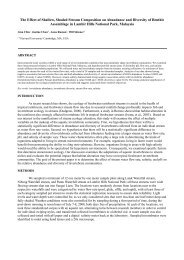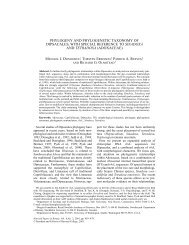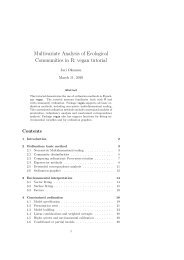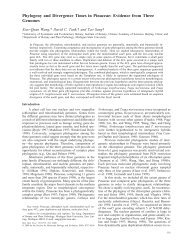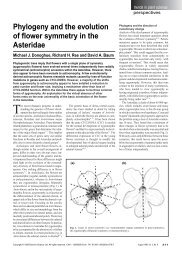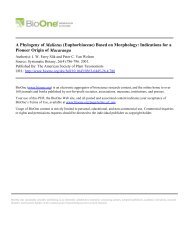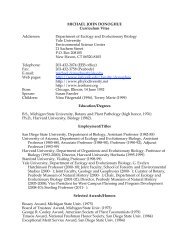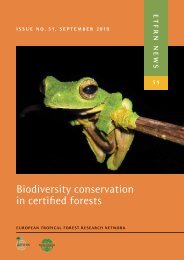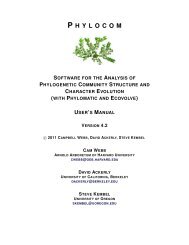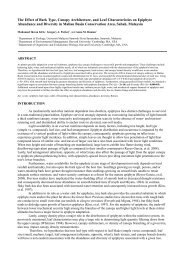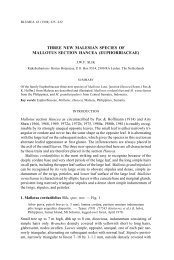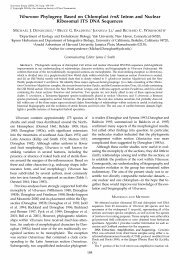Intraspecific and Interspecific Competition for Breeding Site among ...
Intraspecific and Interspecific Competition for Breeding Site among ...
Intraspecific and Interspecific Competition for Breeding Site among ...
Create successful ePaper yourself
Turn your PDF publications into a flip-book with our unique Google optimized e-Paper software.
.Figure 5 Boxplot of flying, chasing <strong>and</strong> perching activities of three different species of dragonflies.DISCUSSIONFrom the data recorded, there is indeed a significant difference in perching behavior of the three different species ofdragonflies. Neurothermis ramburii spends more time perching compared to the other two species. From the boxplot (Figure 5),Orthetrum chrysis spends more time chasing compared to the other two species, while Neurothermis spends more time flying. All threespecies have different perching time budget with respect to each other.Based on the observation conducted, female dragonflies do not perch near the site. The site selected was identified asbreeding ground <strong>for</strong> the dragonflies. Mating generally takes places at the breeding site <strong>and</strong> the mating behavior is very complex..Female dragonflies probably perch in the vicinity of the breeding area, <strong>and</strong> only pass by or visit the site to mate <strong>and</strong> breed. Duringobservations, male dragonflies were abundant, but very few females were present. Females are usually only present during mating <strong>and</strong>while laying their eggs. This supports the assumption that the female perches a bit far from the breeding area.The male behavior towards other males belonging to the same or different species exhibits intraspecific <strong>and</strong> interspecificcompetition. <strong>Interspecific</strong> competition is that individuals of one species will suffer in a <strong>for</strong>m of resource reduction due to the presence ofindividuals from a different species. Individuals of different species can compete. When two species compete, individuals of one or bothspecies may suffer reductions in fecundity or survivorship. The fittest individuals of each may be those that escape competitionbecause they utilize the habitat in ways that differ most from those adopted by individuals of the other species. Two species will evolveto become more different from one another than they were previously, they will compete less, <strong>and</strong> thus will be more likely to coexist.<strong>Interspecific</strong> competition is frequently highly asymmetric, <strong>and</strong> the consequences often not the same <strong>for</strong> both species. <strong>Intraspecific</strong>competition is however typically more intense than interspecific competition. Most insect populations that compete <strong>for</strong> limited resourcesprobably exhibit competition, with some individuals obtaining a greater proportion of resources than others suffering someconsequences of deceiving resource availability. If intraspecific competition is generally a more powerful than interspecific competition,


